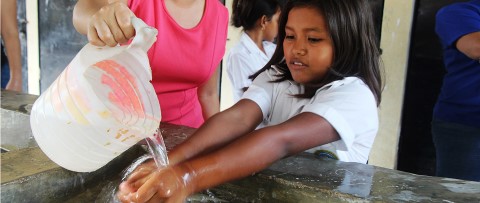- Thought Leadership

Prior to the coronavirus pandemic, good handwashing habits were quietly saving lives and preventing illness. In fact, it is estimated that proper handwashing with soap and water reduces global diarrhea-associated deaths by as much as 50%.
At Children International, we have seen proof of the correlation between proper handwashing, good health and lives saved. It is part of a preventive health curriculum we’ve implemented since 2017.
Thanks to our supporters, our staff, volunteers and youth leaders are learning to adapt to this program – now critically important – during this crisis. In Zambia, for example, youth leaders have made sure that our families, as well as community members in the areas we serve, receive accurate information on COVID-19, the importance of handwashing and safe water promotion.

In normal times, the handwashing program includes individualized follow-up sessions, in which instructors observe participants’ habits to ensure they are using proper techniques. With social distancing still in place, volunteers deliver health education sessions as residents go about the daily chores of drawing water from public access points.
Amid social distancing practices, such vital information is also being shared via short videos created by youth health leaders. In addition to the videos, some youth groups have continued conducting discussions about COVID-19 preventive measures via WhatsApp and Facebook. These groups have elected representatives who share their learnings via direct calls and texts to those who aren’t able to consistently participate.
In a recent report from our Zambia agency, we learned our supporters helped 30 health education sessions take place at 30 water points in just one week, reaching more than 2,000 community members, 709 caregivers and 535 sponsored children and youth.

Comments
You must be logged in to comment. If you have an account, click here to log in.